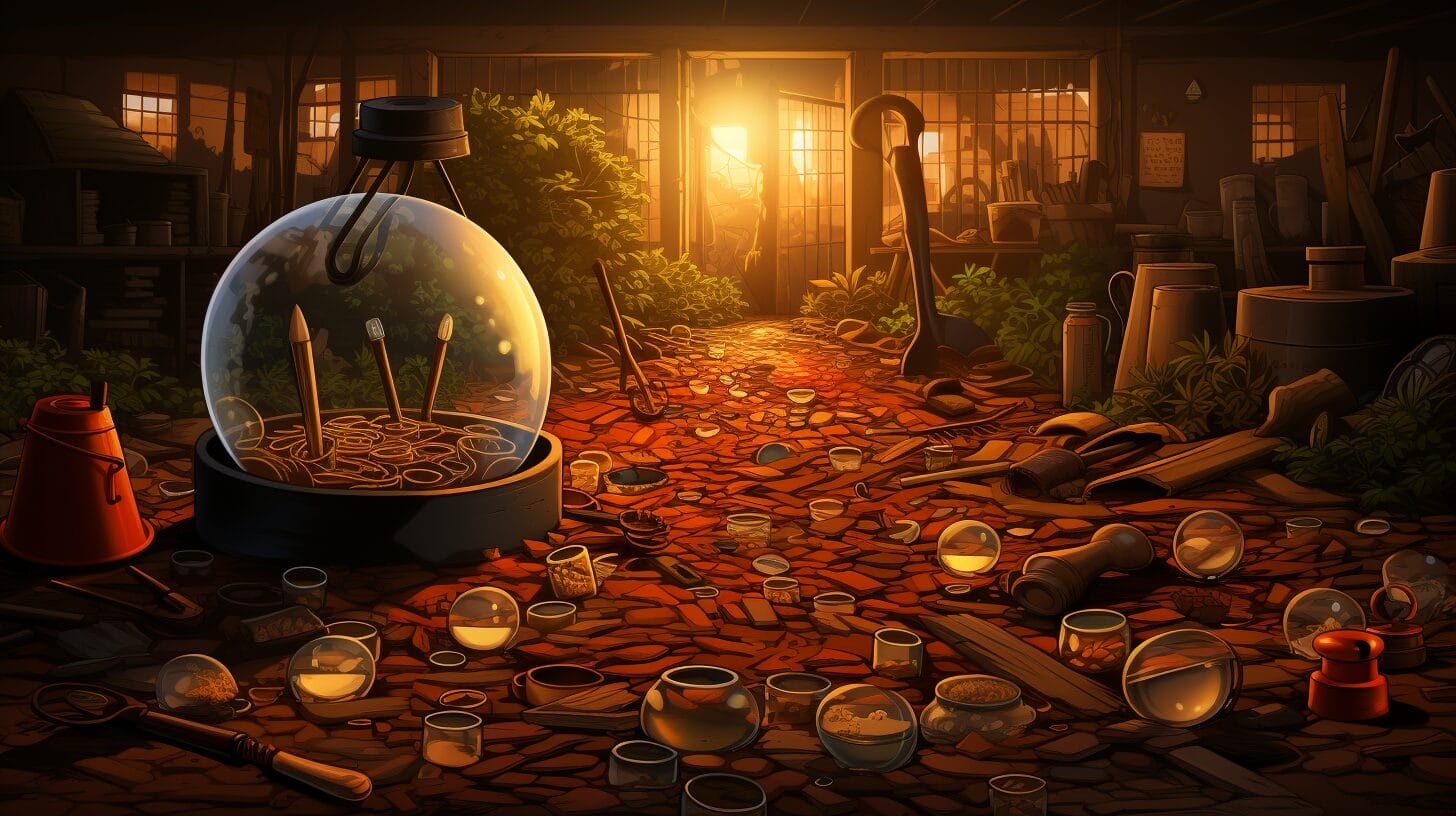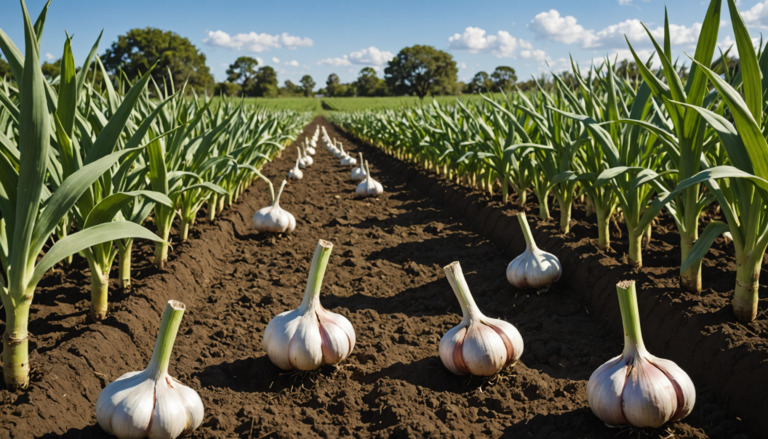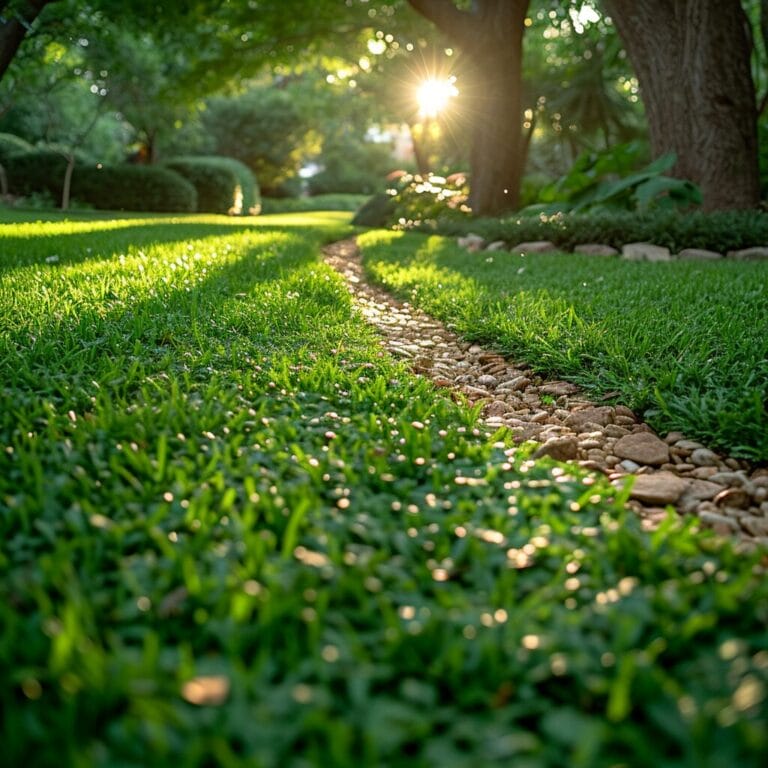What could be the possible reasons for these worms’ migration and where do they go?
Our professional curiosity has led us to investigate various factors – from environmental conditions to the worms’ natural behaviors – that could contribute to this mystery. The right solutions might not only enhance the health and productivity of our worm farms by providing appropriate worm food but also provide valuable insights into sustainable composting principles.
Together we will discover potential solutions to worm farm problems – those that will keep our worms, even robust earthworms, content, thriving, eating the worm food we provide and preventing them from attempting to escape.
Key Takeaways
- The bedding material you use at the bottom of the bin is vital to generate a robust habitat and adequate food source for worms in a successful worm farm.
- Supervising the correct moisture level in the bedding at the bottom of the bin is critical for inhibiting anaerobic conditions, a common worm farm problem.
- Red worms, also known as red wigglers, are the recommended choice for composting in a worm farm.
- Regular inspection and observation of the worm farm conditions are necessary to identify any issues or imbalances that may affect the worms.
Understanding the Basics of a Worm Farm

At the heart of vermicomposting, worm farms turn organic waste into nutrient-rich compost through the work of specialized compost worms. A thriving worm farm requires attention to several critical elements:
- As a worm’s refuge and source of food, bedding material is a crucial factor in what worms eat. It can be made from shredded paper, cardboard, peat moss, or coconut coir and must be kept moist but not soggy to prevent anaerobic conditions.
- The moisture level in the bin may influence its delicate balance and may affect how many worms survive. If conditions in the worm farm are too dry, worms won’t thrive but if they’re too saturated, we face worm farm problems such as creating a harmful environment.
- Choosing the right worms, knowing what they will eat, and understanding their preferred eating locations is crucial, particularly for new worm farmers beginning a worm farm. Red worms, or red wigglers, are the best choice for composting due to their voracious appetite and adaptability.
Indicators That Your Worms May Try to Escape

Recognizing the signs indicating your worms might be planning an escape is crucial:
- If you find worms congregating around the edges or the lid of the bin, it indicates that these worms need a more hospitable environment.
- Excess moisture can suffocate worms, prompting them to escape to drier areas.
- Worms found outside the bin on the ground or surrounding areas signal that internal conditions are unfavorable.
- A worm bin, where you feed the worms, should emit a mild, earthy smell when healthy. A worm farm experiencing problems such as a foul smell is a clear sign of imbalance, often caused by overfeeding or inadequate air holes for proper aeration that may lead to scenarios where worms try to escape.
Inspecting the Environment in Your Worm Bin

Regular inspection of the bin environment is essential, focusing on moisture, temperature, and pH balance:
- The bedding at the bottom of the bin in a worm composter should mimic a wrung-out sponge’s moisture levels – damp but not flooded.
- Maintain a temperature between 55-77°F (13-25°C) for worms’ comfort.
- Adjust pH levels if necessary, aiming for a neutral to slightly acidic environment.
Improving Your Technique for Composting With Worms

To keep the worms thriving and continue providing worm food:
- Worms will eat a balanced diet in moderation, hence it’s important to avoid overfeeding.
- Regularly fluff bedding and add dry materials to maintain the ideal environment.
- It’s crucial to regularly monitor the worm population in the worm composter and ensure sufficient space to prevent overcrowding, as worms, including earthworms, breathe through their skin and may experience discomfort when compacted.
- Regular check-ups help identify issues, such as when worms try to escape, before they become serious in your compost pile.
Troubleshooting Problems in Your Worm Farm

If you’re experiencing a decrease in worm population or clear signs of worm death and escape attempts:
- Check the environment for moisture balance and adjust as needed.
- Restore optimal conditions by checking the pH and ensuring adequate airflow.
- In extreme cases, start over by exposing worms to sunlight or a sudden change in temperature or restore a balanced environment to keep worms on your farm.
Conclusion
Through mindful maintenance and attention to detail, we can solve the mystery of disappearing worms, including scenarios when many worms died. Proper moisture, bedding balance, and optimal organic matter will keep our wiggly friends content and our worm farms, even if you build a new worm farm, flourishing.
Together, we’ve deciphered the code—happy worms eating their preferred worm food mean a thriving ecosystem. Our collective efforts in perfecting this delicate balance will lead to lush, productive worm farms. Victory for our vermiculture ventures is finally within reach!
Frequently Asked Questions
What is vermicomposting in the context of worm farms?
Vermicomposting refers to the process of using worms, commonly red wrigglers, to create compost. These worms decompose organic material such as food scraps and waste, producing worm compost, or vermicompost, often considered as a high-quality soil conditioner.
Why did worms disappeared from worm farms and bins?
The disappearance of worms, including earthworms from your compost bin, where you usually feed the worms, could be due to various factors leading to worm death. Worms could be dying due to a lack of food, excess moisture, or unsuitable bedding material. Alternatively, they could be trying to escape due to unfavorable conditions within the bin.
What kind of bedding should I use for red worm composting?
Providing non-toxic, absorbent materials in the bedding for red worm composting helps retain moisture, creating a conducive environment and ensuring that worms don’t try to escape. Bedding materials such as shredded newspaper, cardboard, peat moss, or other waste fiber products are commonly used in the bottom of the bin for worm farms.
How often should I feed my worms in a vermicomposting bin?
In general, it’s best to feed your worms, including things that worms can eat like coffee grounds, at least once a week, but this can fluctuate depending on how swiftly they process the food scraps. It’s important to add food only when the previous batch of food waste is almost fully consumed to prevent fruit flies and other pests.
What are worm castings and what are they good for?
Worm castings, or worm poop resulting from the consumption of worm food and coffee grounds among other organic materials, are the end product of the digestion process from worms breathing through their skin, including earthworms. Packed with nutrients, worm castings improve the structure and fertility of the soil, making them the ideal addition to any garden, especially if you’re looking to start a worm garden.







